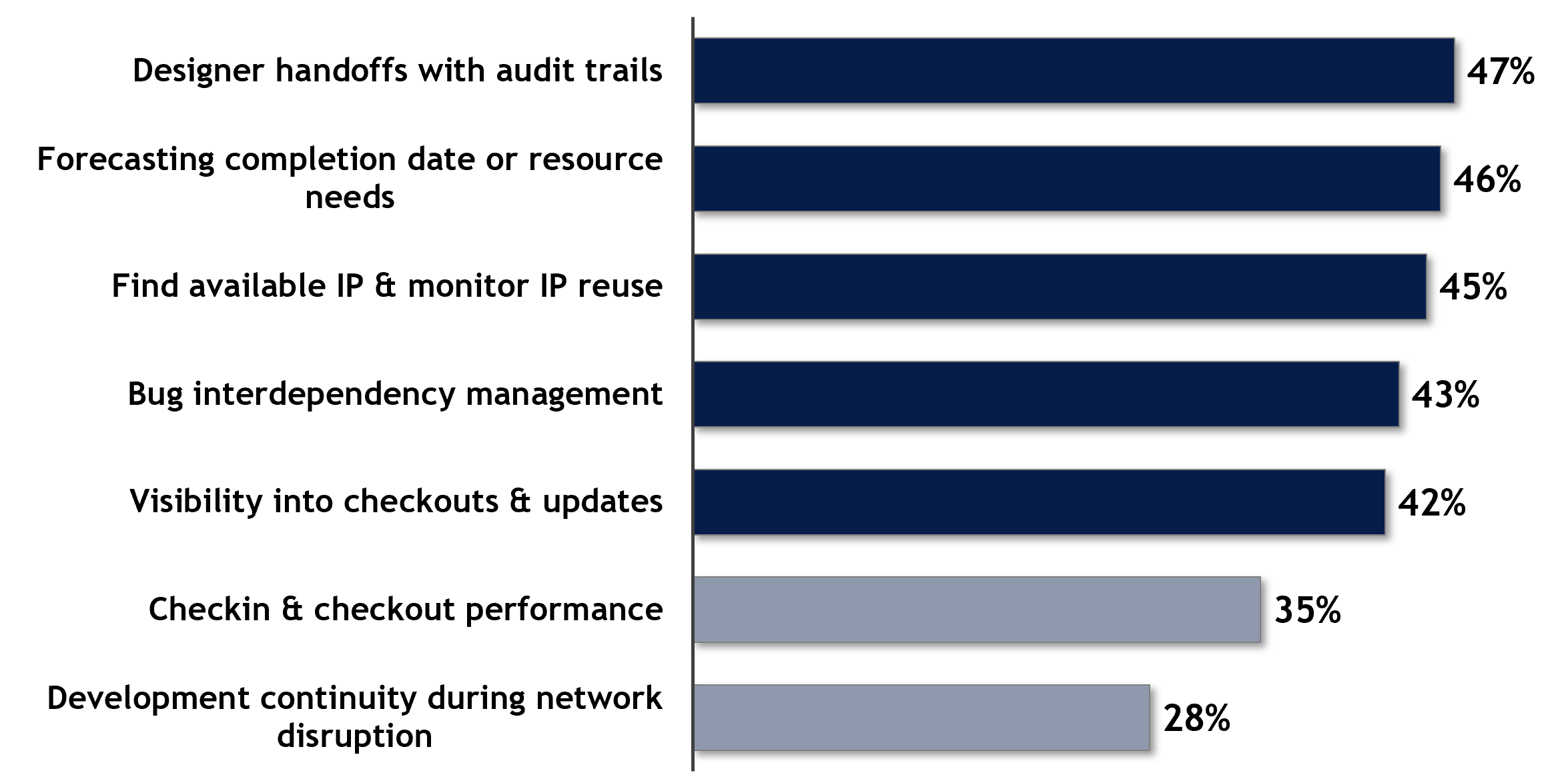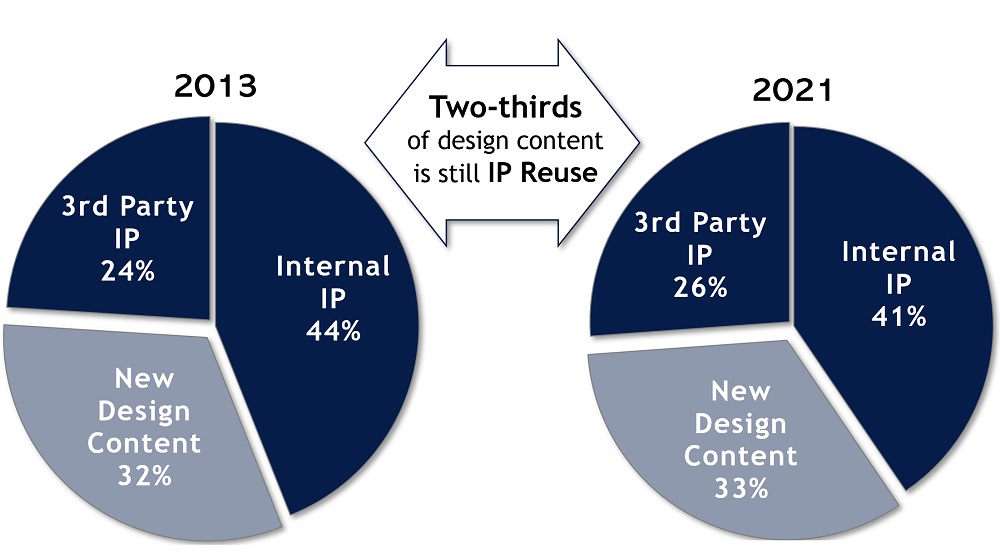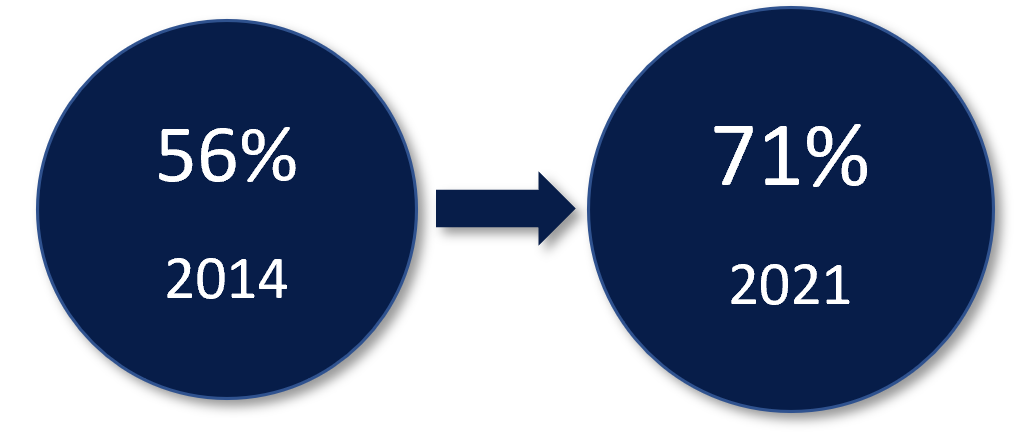1. Introduction
IC Manage had an independent firm survey system and semiconductor design & verification engineers and engineering management on their design data management (DDM) practices and technologies.
The results are presented below. Where appropriate, these results are compared with prior surveys to reveal insights and trends into how design & IP data management is evolving.
The goal is to provide valuable insights to the system and semiconductor industry.
Survey Methodology
- Anonymous survey emailed to tens of thousands of SoC/IC/Systems professionals by independent firm.
- Target audience: design engineers, verification engineers, CAD managers, & engineering management
- 137 respondents worldwide completed the survey in Q4 2021.
2. Multisite Design Data Management
Organizations Doing Multisite Design (2+ sites)
The dominance of multisite design development practices has grown.
89 percent of the respondents said their organizations are doing multisite design, with two or more development sites. This is up from 82 percent in the 2014 survey.
Mergers and acquisitions result in multiple, geographically dispersed development teams, as does the need to attract and retain top talent. Additionally, schedule pressures drive round-the-clock design and verification.
Top 3 Multisite Design Data Management Features Wanted
Multisite DDM places additional requirements on design & IP management systems to achieve secure, efficient collaboration across geographically separated design and verification teams.
The top three features desired for multisite Design Data Management are designer handoffs with audit trails (47%); forecasting completion date or resource needs (46%); and IP reuse mechanisms, such as finding IP & monitoring IP reuse (45%).
The close second tier features were bug interdependency management (43%) and check-ins and check-out visibility (42%).
Third tier features were check-in and check-out performance (35%) and development continuity during network disruption (28%).
3. Projecting delivery dates & resource needs
Advanced DDM systems can apply big data analytics to the current and historical design data captured to do forecasting to better optimize resources to meet tapeout dates.
The top two items that engineering teams and management want to forecast are the resource and schedule impact of late design changes (53%) and project resource requirements (52%).
The second-tier items sought were projecting initial tapeout dates (37%) and the resource/schedule impact of moving to a new process node (29%).
4. IP creation, reuse & monitoring infrastructure
Non-Memory SoC & IC Design Content
IP reuse accounts for two-thirds of design content in 2021 (67%). This level of IP reuse remains virtually the same as shown in the 2013 survey (68%).
There was a small shift in the use of 3rd party IP reuse in 2021 (26%) over 2013 (24%).
5. Managing Multiple Design Data Management Systems
Companies Supporting Multiple DDM Systems
Ongoing merger and acquisition activity also results in companies supporting diverse development teams using different design & IP management systems, including commercial and/or open source.
In 2021, 71 percent companies supported multiple design data management systems.
This increased from 56 percent in 2014.
Number of DDM Systems Supported
The number of organizations supporting multiple design data management systems is increasing. 71 percent of organizations now support multiple DDM systems, compared with 56 percent in 2014.
31 percent have two DDM systems, and 40 percent have three or more. Of these, 18 percent have four or more DDM systems, which is double the 9 percent with that many in 2014.
6. Design & Verification in the Cloud
Company Plans for Design & Verification in the Cloud
Nearly 70 percent of organizations plan to utilize cloud for design or verification over the next two years. This is double the current number using the cloud in some way.
In contrast, only about 30 percent of organizations expect to continue to exclusively use on-premise compute farms in two years.
Specific Cloud Plans Over Next Two Years: All Tools vs Hybrid Cloud Bursting
Nearly half of organizations (47%) either already use the cloud or plan to do so over the next two years – either for hybrid cloud bursting or for selected tools. This is more than twice the number of organizations that either already use the cloud for all their tools, or plan to do so over the next two years (22%).
This reinforces how our industry is still navigating cloud adoption as well as the appeal of hybrid cloud bursting to development groups that wish to protect their existing investments in on-premise data centers.
7. Summary
IC Manage’s 2021 survey on Design & IP Management underscores the complexity that the mergers and acquisitions in the system and semiconductor industry add to design & IP management across diverse, often global teams.
It also confirms the continuing push for IP reuse and shows the move toward cloud adoption is firmly underway and may double in the next two years.










